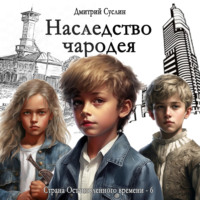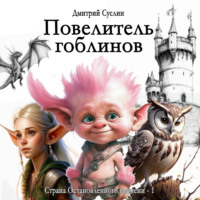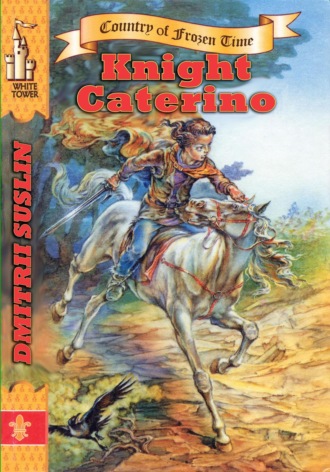
Полная версия
Knight Caterino
So in the Country of Frozen Time appeared a new ruler with whom everyone immediately fell in love. Although he was a little boy, he was always in full view of his subjects. As for the great Sovereign who sat in seclusion in the White Tower, the subjects began to forget him gradually. Indeed not even one inhabitant of the country had ever seen him whereas everyone knew Prince Eugene now. Prince Eugene and his court led a life full of festivities, parties, and fun. Now it was as cheerful and noisy on the upper streets of the city as on the lower ones.
No one knew that everything would change in a few weeks. Prince Eugene would suddenly become sad and pensive. A little more time would pass and the noisy festivities and parties would stop. The courtiers would again wander along the castle despondently. Then the Sovereign would die. His funeral would be grandiose and majestic. The courtiers would bury the body of the Sovereign in the Tomb of Kings, which was located in the castle. Prince Eugene would be present at the funeral. There he would give a speech in memory of the deceased and afterwards would declare himself the Sovereign of the Country of Frozen Time. He, like his predecessor, would withdraw into the White Tower and live there with dozens of courtiers. In memory of the dear boy, people would call him not Sovereign, but Prince of the White Tower and sigh sadly at the same time.
Chapter Six THE COUNTRY OF FROZEN TIME
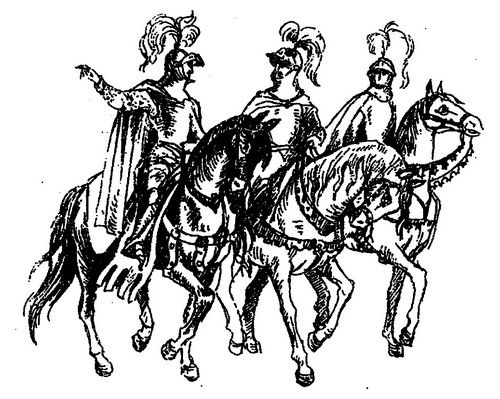
In ancient times, knights rode around the world and accomplished feats in the name of the damsels of their hearts. With time, there were fewer and fewer great knights. There were many ordinary knights and over time, there were more and more of them, but great knights who whole-heartedly honoured and observed the code of honour began to die out. They perished in duels, in crusades, and from the treachery of kings.
The most important and famous among them were Count Gottfield, descendant of Lancelot himself, [4] Duke Artois – fearless, descendant of Charlemagne, [5] and Baron Siegfried, whose ancestors were Nibelungs. [6] Their love for the beautiful Fairy of Eternal Youth linked them together. For fifty years, the three knights were always fighting all the tournaments and duels in her honour. In all this time, the Fairy had not change at all. She remained young and beautiful but she could not marry, otherwise she would lose the godly gift of youth and immediately become a normal woman. She lived in France and people came from all over the world only to look at her. Once a year the knights Gottfield, Artois, and Siegfried met in her castle and fought each other. Not once did one of them gain the upper hand over the others. After the tournament all three went to the feast given by the Fairy of Eternal Youth.
Years went by. Nothing changed until King Louis the Cunning appeared in France. He also fell in love with the Fairy of Eternal Youth and wanted to make her his wife. Certainly, the Fairy refused the King and he, his feelings hurt, swore to take brutal vengeance upon the proud girl. He found scoundrels who began to accuse the Fairy of witchcraft. One after the other they came to the Bishop who was called the Great Witch Hunter and reported that the Fairy had ties with the Devil and engaged in witchcraft. These accusations were not surprising because the Fairy had already lived for sixty years but looked like a thirteen-year-old girl. The Great Witch Hunter believed the malicious slander and ordered the arrest of the girl. Rumours spread around the entire country that the Fairy of Eternal Youth was going to be burned on the stake.
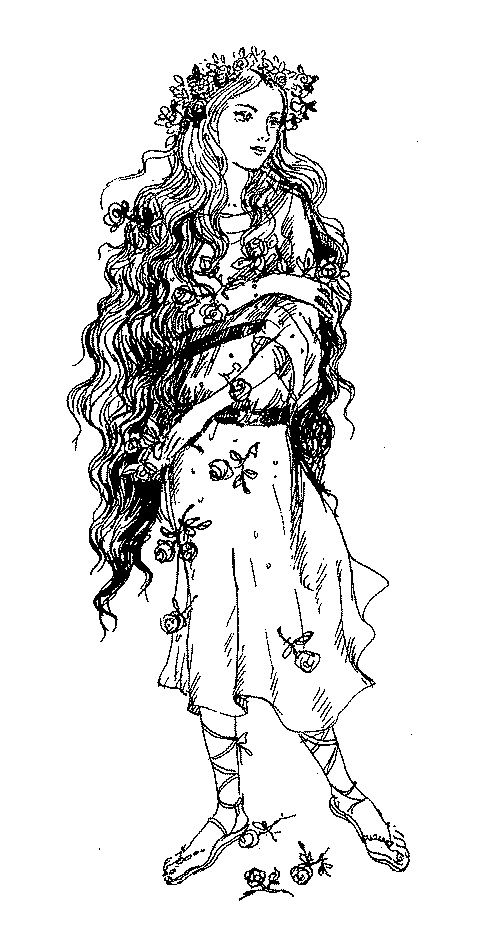
The three knights found out about this. They rushed to the Fairy to save her but she was already locked up in the Bishop’s impregnable castle, moreover, guarded by the King’s soldiers. Together with the knights Gottfield, Artois, and Siegfried came five hundred more fighters – the knights’ vassals. They began the assault of the castle where the Fairy was languishing, and took it. They found the unhappy Fairy in the gloomiest dungeon and freed her. The Bishop cursed all four for this and excommunicated them. The three knights and the beautiful Fairy became exiles. The Great Witch Hunter’s people and King Louis’ army pursued them. The knights urged all who were still true to the code of knighthood to their side; but only fifteen knights from the whole of Europe came to their aid.
When it became impossible for the Fairy and her followers to resist and the exiles had lost more than half of their people, the Fairy said that she could not endure it that people were dying because of her. “I must leave the land,” she decided. “Merlin [7] my great ancestor left a spell with which I can freeze time.” “We’ll go with you,” said the three knights, “and take all our people with us.” So they did.
Europe, however, was too populated to freeze time on its land; therefore the exiles went to the east, and then to the north. After several months on their sojourn, during which a number of loyal people perished, the exiles reached the mountains where dragons still flew, gnomes, vampires, and wizards lived, as well as elves, mermaids, and giants. The people that lived here were peaceful and industrious. In this land, still almost untouched by Christianity, the Fairy of Eternal Youth decided to freeze time. Before the people on their knees, she cast Merlin’s spell. The sky turned black and the sun and the moon were hidden. Earth and its inhabitants continued to live their lives and did not notice how an enormous space, populated by people, beasts, birds, and magic essences, had ceased to exist; but then the Country of Frozen Time was invisible to them.
When time had frozen for the knights and the Fairy, they discovered that there was no one else around them. Beyond the mountains which they crossed over was emptiness – nothing, only a dense grey fog. Directly in front of them, however, spread a valley in bloom. On seeing the valley from the highest mountain, the knights and the Fairy made their way to it. When they had gone almost half way, something happened that separated the knights from the Fairy.
During a halt at night, the Fairy of Eternal Youth saw Merlin in her dream. The great wizard said that she would stop here and not go any further. When the Fairy awoke, she saw that a white dragon with blue eyes had blocked the road. The three knights rushed to the new enemy. They indeed had defeated quite a few dragons in their time but they could not even get within a hundred steps of the white dragon. The Fairy ordered them to leave the beautiful beast in peace. She went to it herself. When the Fairy got close to the dragon, it placed its head on her shoulder and with its long tail fenced off the girl from the people. Thus, the white dragon became the most devoted guard of the Fairy of Eternal Youth. At the mountain peak in the cave in which the dragon dwelled, a castle was built for the Fairy.
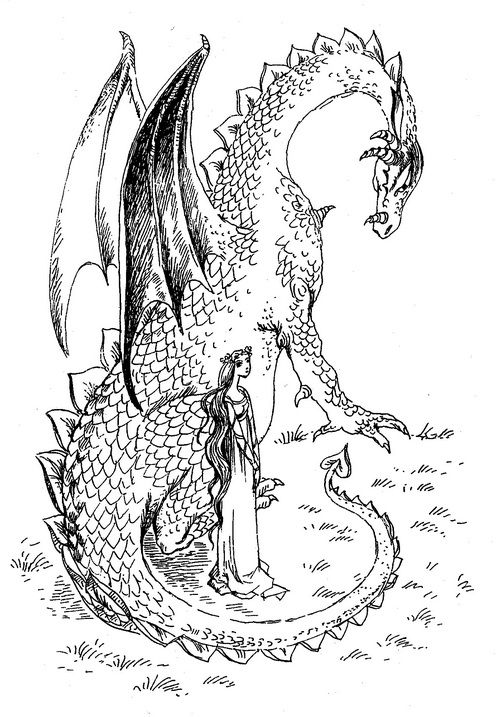
Three months went past; the knights and their people left this place because the Fairy of Eternal Youth so directed. They reached the plain in a week. Here they went their separate ways; each with his own people in his own direction. Count Gottfield went forward; Duke Artois to the right; and Baron Siegfried to the left. The Country of Frozen Time turned out to be large and populated by different nations. The knights had to wage war from time to time to subdue the inhabitants, but the forest where fairies, gnomes, and goblins lived still remained inaccessible to them. The three knights created three kingdoms. They all married girls from the conquered tribes in order to continue their lineage but continued to worship the Fairy of Eternal Youth. Time passed and the time came for all three to meet their hour of death. They set off again for the mountains to the castle of the Fairy of Eternal Youth. There, a thousand steps from the cave of the dragon, the knights died. The people erected in memory of them three burial mounds at the foot of the mountain of the Fairy and the white dragon. At night the spirits of the three knights, in armour with weapons and on horses, came out of the graves and patrolled the surroundings. Does any danger threaten the lady of their hearts?
The history of the Country of Frozen Time only began with these events. The sons of the three knights, after their fathers’ deaths, started right away to divide the kings’ fortunes. They created twelve small kingdoms out of the three large ones. Some had more, some had less, but all twelve new kings, having forgotten the paternal last wishes for them to live in peace and harmony, began to wage war among themselves. Tribes of wild people living in the forest, the swamps, and the mountains took advantage of this. They meddled in the wars in order to get a share of the wealth. There began a golden time for the dregs of society. The gnomes sided with one king; the goblins another. Only the forest elves supported no one and were only for themselves. Then a coven of witches flew in on brooms and in mortars.
The knights Gottfield, Artois, and Siegfried had lived for three hundred years and the country did not know war or strife for three hundred years. Now, after the epoch of prosperity, peace, and calm came the time of wars, barbarity, and suppression of knowledge. The spirits of the dead kings were outraged. They left the graves and went around the country, threateningly brandishing spears. People were frightened and the strife ended, but only temporarily. As soon as the spirits left, war resumed. One of the warring sides prevailed for a short while and a long-awaited peace began. Then a new enemy appeared and war broke out with new vigour.
The situation changed when on the outskirts of the country in the opposite direction from where the knight-founders came, an enormous city appeared from nowhere. It was teeming with people and surrounded by high walls. Its inhabitants had guns and muskets. The city subdued all the kings but it also grew poorer. There was no one with whom to trade. This city had a very interesting and tragic history.
The city was beautiful and rich. Once, when enemies attacked the country, this city was the only one that did not send soldiers to the common conflict. The townspeople apparently assumed that the enemy would not reach their land which was hidden among the forests and swamps, but they were seriously mistaken. The enemy attacked precisely their city and in spite of all obstacles surrounded it from all sides. A long, exhausting siege began. It was not surprising that despite all requests and entreaties, none of the other cities came to the aid of their compatriots who had fallen on hard times. All remembered how arrogantly the citizens of this besieged city had refused to work together with everybody. Now, while it was fighting alone with hordes of enemies, the rest of the cities gathered strength and prepared for war. When the townspeople understood that they could not defend their hometown, they decided on a last resort.
The famous wizard Agaiya lived long ago. At one time, he quarrelled with a powerful prince who ordered that Agaiya be caught and burned on the stake near his castle. The wizard managed to hide but forgot in his hurry to take the witchcraft books with him. Without them he became as helpless as a child. The Prince’s soldiers delivered these magic volumes to their lord. The Prince, no matter how he tried, was unable to read them and in the end angrily ordered to burn Agaiya’s books. Soon he found out that the wizard was in that same besieged city. The Prince sent his army there to pick up the wizard but the townspeople refused to turn in Agaiya because he had taught them how to make artificial silk. Regardless of how much the Prince threatened, regardless of how much he tried to break into the city by force, he did not succeed. He then surrounded the city. The siege went on for three months and only ended when Agaiya died. The Prince went home and the city settled down to its previous life.
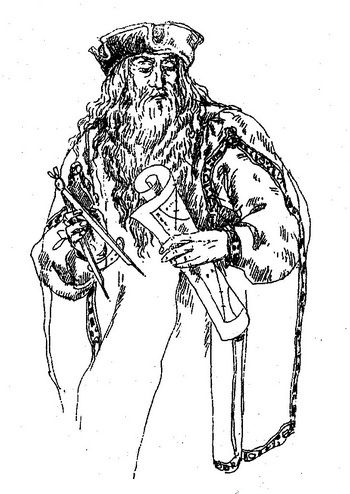
The story does not end here. Before his death Agaiya had gathered the city officials and solemnly announced, “I thank you, noble citizens, for not turning me over to my worst enemy. Now, old and weak, I have no strength to do anything for you except one: I can move your city to the Country of Frozen Time. And then it will forever remain as it is now. It won’t become poorer but neither will it acquire wealth. Please decide for yourself how to proceed. But whatever you decide, my magic will remain in power for 300 years. You just have to come to my grave and utter the incantation, ‘Word of Agaiya, make it so!’ and everything will be carried out. Only please remember: the city officials can make this decision only with the agreement of majority of the townspeople and there must not be fewer than twenty people invoking the incantation, otherwise any joker can take advantage of it. Good-bye!” The wizard Agaiya died with these words. The inhabitants of the city were puzzled. Why freeze time for them? Indeed so much good could be waiting in their future. Take the artificial silk at least. Gold will fall into the treasury and fill the townspeople’s purses from all over the land.
A hundred years passed. Now, when a cruel and merciless enemy threatened destruction to the entire city, the people recalled Agaiya’s words. There was no need to choose in this fatal hour. Not half, but almost all the inhabitants decided to leave for the Country of Frozen Time. A huge crowd headed by the officials and the mayor set off for the city cemetery. To their horror, however, the townspeople discovered that no one remembered where Agaiya’s grave was located. In a hundred years, inscriptions on old stone slabs had been rubbed away. The people cried out with grief and desperation. At this time the enemies began the last and fiercest assault. They had decided to take the city at any cost or die. The inhabitants of the city thought that their last hour had come, but suddenly one of the graves, the most unpretentious and modest in look, lit up with a bright white light. Everyone understood that this was Agaiya’s grave. They shouted in unison, “Word of Agaiya, make it so!” and a miracle happened. Before the eyes of the dumbfounded enemy, the city began to sink slowly into the ground.
The enemies rejoiced at first. They thought that it would be easier for them to take the city this way because its walls had become lower. Then it dawned on them that witchcraft was at work here and they began to step back in panic. Those who tarried fell into a deep abyss which was formed on the spot of a former ditch. Those who did not manage to climb down from the walls which flared up like torches were instantly burned like dry autumn leaves. The city continued to sink into the ground. Its high walls disappeared, then the fortress towers. Later went the roofs of the highest houses, church domes, and crosses on belfries. Finally, the town hall, the highest building of the city was hidden from sight. A blue flag with the emblem of a bear working on a loom sadly waved its sharp ends. Only a huge deep pit remained on the spot of the city. There was a heavy downpour. It poured until the water filled the rim of the foundation pit. Now on that place lay a beautiful lake surrounded by dense forests on all sides. That was the way the unknown city came to be in the Country of Frozen Time.
There lived in this city a master who built houses and palaces. His name was Walter and he was a very skilful architect. Moreover, he was also an artist. He erected the White Tower. Like all talented and brilliant people, Walter had enviers and ill-wishers. The most well known and influential among them was the builder Patchery, a friend of the mayor and the deputy of the city. He managed to convince them that Walter spent for his own needs the money given to him by the city for construction of the new town hall. Part of the money, Patchery assured them, Walter had hidden in his own house. They went to check and found that the famous architect had a bag of gold. (Of course, Patchery had placed it there.) Walter tried to convince his fellow citizens that he was not guilty but they sentenced him to death. Only at the last minute when the executioner was ready to chop off Walter’s head was the death sentence commuted to exile.
Chapter Seven THE LIFE AND ADVENTURES OF WALTER

Walter left his hometown with melancholy and a heavy heart. He walked out of the gates with his vast family – his wife, fourteen sons, eight daughters, twenty-eight grandsons and granddaughters – and fifty apprentices following in carriages behind him. All of them made their way for an unknown land. Many townspeople saw them off with sympathetic looks but not a single person stood up for the wrongfully-convicted Walter because all, knowing the vindictiveness and insidiousness of the mayor and the deputy, feared them.
The whole summer Walter and his companions wandered around the country. What adventures and experiences he had. Several times greedy knights attacked his caravan. Only pistols and muskets helped to beat them off. Evil goblins tried to steal the women. Grenades with gunpowder saved them. A gigantic eagle carried off Walter’s youngest and favourite son, a ten-year-old boy…
Walter pursued the predatory bird for three days. When his horse dropped, he ran after the eagle. He pursued the kidnapper until the eagle reaches its nest and delivered the loot to the nestlings. The little ones by all appearances were full. Fortunately, the hen eagle had recently fed them so they did not tear the boy to pieces but made him their playmate. Walter sat on a rock and started to think how to save his son. He sat for a long time but could not come up with anything. The nest was on the top of the highest tree and either the eagle or the hen eagle was constantly in it.
Конец ознакомительного фрагмента.
Текст предоставлен ООО «Литрес».
Прочитайте эту книгу целиком, купив полную легальную версию на Литрес.
Безопасно оплатить книгу можно банковской картой Visa, MasterCard, Maestro, со счета мобильного телефона, с платежного терминала, в салоне МТС или Связной, через PayPal, WebMoney, Яндекс.Деньги, QIWI Кошелек, бонусными картами или другим удобным Вам способом.






